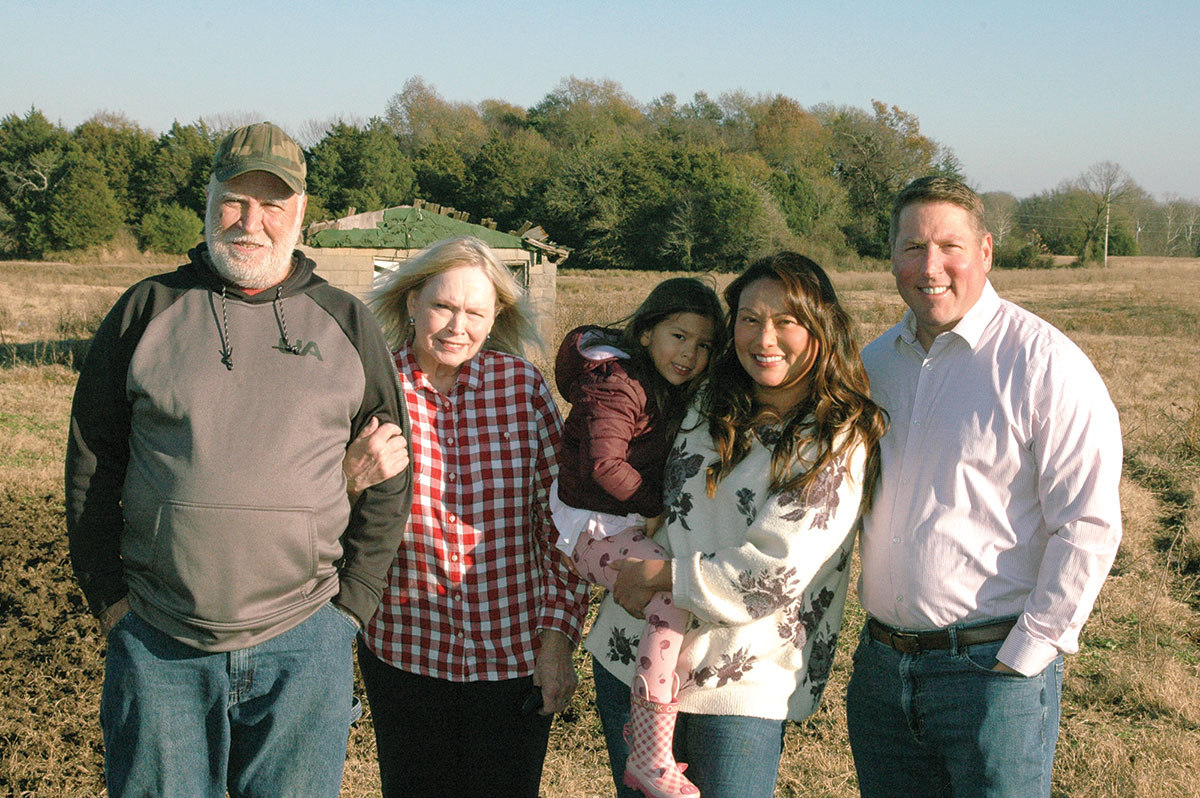Jeral Hampton and grandson Brent Woolley combine experience with education to expand their successful registered Hereford and Hereford-cross cattle operation in Booneville, Ark. Jeral is the semi-retired Chief Executive Officer of First Western Bank. Brent works at the Dale Bumpers Research Center… located south of town.
“I started with 11 acres,” said Jeral. Now, we own 270 acres and lease additional hay land. His joining me and liking it, has allowed me to go this far. We mesh together my experience and his education to make it work.”
“In the last three or four years we've added almost 100 acres to the farm,” said Brent. “I'm fortunate that I have a grandfather that enjoys doing the same things and has let me do things on the farm.”
“We will be able to do considerably more than we used to. And I'll have fun watching Brent do most of it,” laughed Jeral. “We've been a long period putting it together, but we are proud of it. As we've bought land, we've tried to improve it and utilize it as a cattle farm.”
“We have a real good smaller operation. He's (Jeral) created demand for our cattle by keeping a small quality herd. Our primary focus will stay Herefords,” said Brent.
“I've always had good luck with Herefords. They are very easy cattle to handle. Sometimes people will come to us for a bull to help tame their herd down. We have never had problems calving. The cows give enough milk that we don't have to creep feed. They raise good calves. We don't creep feed at all. Usually people take a Hereford bull and put them on black Angus cows. We are turning that around. We are putting a Black Angus bull on our cows because the cows don't have any trouble calving and they give good milk. We think this is going to work well. They still produce the black baldies that sell,” explained Jeral.
Brent and Jeral explained the importance of choosing the right bag characteristics in a cow. “We look for cows with a small udder. A good little bag. A lot of times the bags get too big and the a little calf starting out can't get the milk. Ours have the smaller teats and good bags," said Brent.
“When I was starting out I had cows that gave so much milk that the calves couldn't get all the milk and that would cause mastitis,” said Jeral.
Herd health is top priority at Hampton Farm. “At one time we had problems with pink-eye. But we are not having that problem with our herd anymore,” said Jeral.
“I think that it's a combination of things. We use fly tags. We brush hog to keep the pastures clipped off so that the cattle don't get seed heads in their eyes. If I detect any cow that may have an eye problem we treat it immediately,” Brent explained.
“Brent's experience at the research center allows him to detect any problems with the herd so much better than I could. When he sees that, we get the cow in and he takes care of it personally. Or, if we have to, we have an excellent veterinarian, Charles Meesner. He is tops," explained Jeral.
Giving credit where it is due, Jeral and Brent attribute much of their success in herd health to their vet, Dr. Charles Meesner. “We are so fortunate in having someone like him to help us,” Jeral said.
“I don't get in with the cattle anymore but I thoroughly enjoy watching Brent and Dr. Meesner work cattle together. It's just like a well oiled team. They work so easily together. And that's much better for the cattle, too.”
“Dr Meesner helps us stay on top of our vaccine program. Everything gets shots and a new fly tags every year,” said Brent.
To keep stress for everyone at a minimum they try to move the cattle as little as possible. “We don't have any fancy cattle working facilities, but we do have several little pens and a squeeze chute,” he said. “We don't put up panels or force them into anywhere. We have three good working pens so that we don't have to bring them in to far. We move from pen to pen and catch them, work them and that's it. ”
“We are still learning, we are still experimenting. We are particularly using things that Brent learns at the research center to make the farm better. Whether it be the grass, pasture lands, or things that I learn in soil conservation. We try to take those and use them,” Jeral said smiling. “And it's worked. It's been very good.”






